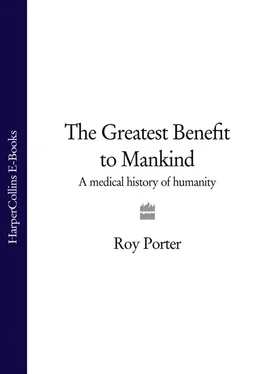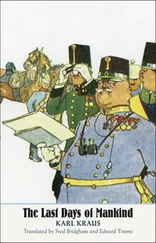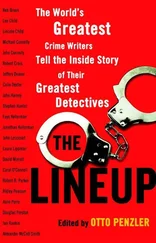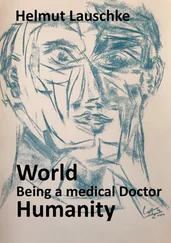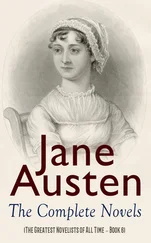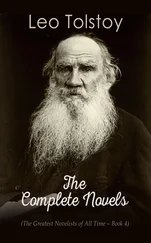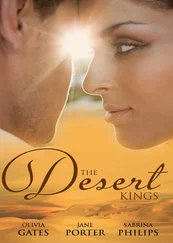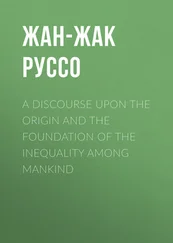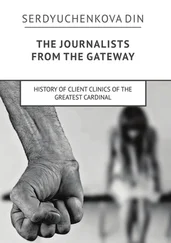In Europe from Graeco-Roman antiquity onwards, and also among the great Asian civilizations, the medical profession systematically replaced transcendental explanations by positing a natural basis for disease and healing. Among educated lay people and physicians alike, the body became viewed as integral to law-governed cosmic elements and regular processes. Greek medicine emphasized the microcosm/macrocosm relationship, the correlations between the healthy human body and the harmonies of nature. From Hippocrates in the fifth century BC through to Galen in the second century AD, ‘humoral medicine’ stressed the analogies between the four elements of external nature (fire, water, air and earth) and the four humours or bodily fluids (blood, phlegm, choler or yellow bile and black bile), whose balance determined health. The humours found expression in the temperaments and complexions that marked an individual. The task of regimen was to maintain a balanced constitution, and the role of medicine was to restore the balance when disturbed. Parallels to these views appear in the classical Chinese and Indian medical traditions.
The medicine of antiquity, transmitted to Islam and then back to the medieval West and remaining powerful throughout the Renaissance, paid great attention to general health maintenance through regulation of diet, exercise, hygiene and lifestyle. In the absence of decisive anatomical and physiological expertise, and without a powerful arsenal of cures and surgical skills, the ability to diagnose and make prognoses was highly valued, and an intimate physician-patient relationship was fostered. The teachings of antiquity, which remained authoritative until the eighteenth century and still supply subterranean reservoirs of medical folklore, were more successful in assisting people to cope with chronic conditions and soothing lesser ailments than in conquering life-threatening infections which became endemic and epidemic in the civilized world: leprosy, plague, smallpox, measles, and, later, the ‘filth diseases’ (like typhus) associated with urban squalor.
This personal tradition of bedside medicine long remained popular in the West, as did its equivalents in Chinese and Ayurvedic medicine. But in Europe it was supplemented and challenged by the creation of a more ‘scientific’ medicine, grounded, for the first time, upon experimental anatomical and physiological investigation, epitomized from the fifteenth century by the dissection techniques which became central to medical education. Landmarks in this programme include the publication of De humani corporis fabrica (1543) by the Paduan professor, Andreas Vesalius, a momentous anatomical atlas and a work which challenged truths received since Galen; and William Harvey’s De motu cordis (1628) which put physiological inquiry on the map by experiments demonstrating the circulation of the blood and the heart’s role as a pump.
Post-Vesalian investigations dramatically advanced knowledge of the structures and functions of the living organism. Further inquiries brought the unravelling of the lymphatic system and the lacteals, and the eighteenth and nineteenth centuries yielded a finer grasp of the nervous system and the operations of the brain. With the aid of microscopes and the laboratory, nineteenth-century investigators explored the nature of body tissue and pioneered cell biology; pathological anatomy came of age. Parallel developments in organic chemistry led to an understanding of respiration, nutrition, the digestive system and deficiency diseases, and founded such specialities as endocrinology. The twentieth century became the age of genetics and molecular biology.
Nineteenth-century medical science made spectacular leaps forward in the understanding of infectious diseases. For many centuries, rival epidemiological theories had attributed fevers to miasmas (poisons in the air, exuded from rotting animal and vegetable material, the soil, and standing water) or to contagion (person-to-person contact). From the 1860s, the rise of bacteriology, associated especially with Louis Pasteur in France and Robert Koch in Germany, established the role of pathogenie micro-organisms. Almost for the first time in medicine, bacteriology led directly to dramatic new cures.
In the short run, the anatomically based scientific medicine which emerged from Renaissance universities and the Scientific Revolution contributed more to knowledge than to health. Drugs from both the Old and New Worlds, notably opium and Peruvian bark (quinine) became more widely available, and mineral and metal-based pharmaceutical preparations enjoyed a great if dubious vogue (e.g., mercury for syphilis). But the true pharmacological revolution began with the introduction of sulfa drugs and antibiotics in the twentieth century, and surgical success was limited before the introduction of anaesthetics and antiseptic operating-room conditions in the mid nineteenth century. Biomedical understanding long outstripped breakthroughs in curative medicine, and the retreat of the great lethal diseases (diphtheria, typhoid, tuberculosis and so forth) was due, in the first instance, more to urban improvements, superior nutrition and public health than to curative medicine. The one early and striking instance of the conquest of disease – the introduction first of smallpox inoculation and then of vaccination – came not through ‘science’ but through embracing popular medical folklore.
From the Middle Ages, medical practitioners organized themselves professionally in a pyramid with physicians at the top and surgeons and apothecaries nearer the base, and with other healers marginalized or vilified as quacks. Practitioners’ guilds, corporations and colleges received royal approval, and medicine was gradually incorporated into the public domain, particularly in German-speaking Europe where the notion of ‘medical police’ (health regulation and preventive public health) gained official backing in the eighteenth century. The state inevitably played the leading role in the growth of military and naval medicine, and later in tropical medicine. The hospital sphere, however, long remained largely the Church’s responsibility, especially in Roman Catholic parts of Europe. Gradually the state took responsibility for the health of emergent industrial society, through public health regulation and custody of the insane in the nineteenth century, and later through national insurance and national health schemes. These latter developments met fierce opposition from a medical profession seeking to preserve its autonomy against encroaching state bureaucracies.
The latter half of the twentieth century has witnessed the continued phenomenal progress of capital-intensive and specialized scientific medicine: transplant surgery and biotechnology have captured the public imagination. Alongside, major chronic and psychosomatic disorders persist and worsen – jocularly expressed as the ‘doing better but feeling worse’ syndrome – and the basic health of the developing world is deteriorating. This situation exemplifies and perpetuates a key facet and paradox of the history of medicine: the unresolved disequilibrium between, on the one hand, the remarkable capacities of an increasingly powerful science-based biomedical tradition and, on the other, the wider and unfulfilled health requirements of economically impoverished, colonially vanquished and politically mismanaged societies. Medicine is an enormous achievement, but what it will achieve practically for humanity, and what those who hold the power will allow it to do, remain open questions.
The late E. P. Thompson (1924–1993) warned historians against what he called the enormous condescension of posterity. I have tried to understand the medical systems I discuss rather than passing judgment on them; I have tried to spell them out in as much detail as space has permitted, because engagement with detail is essential if the cognitive power of medicine is to be appreciated.
Читать дальше
